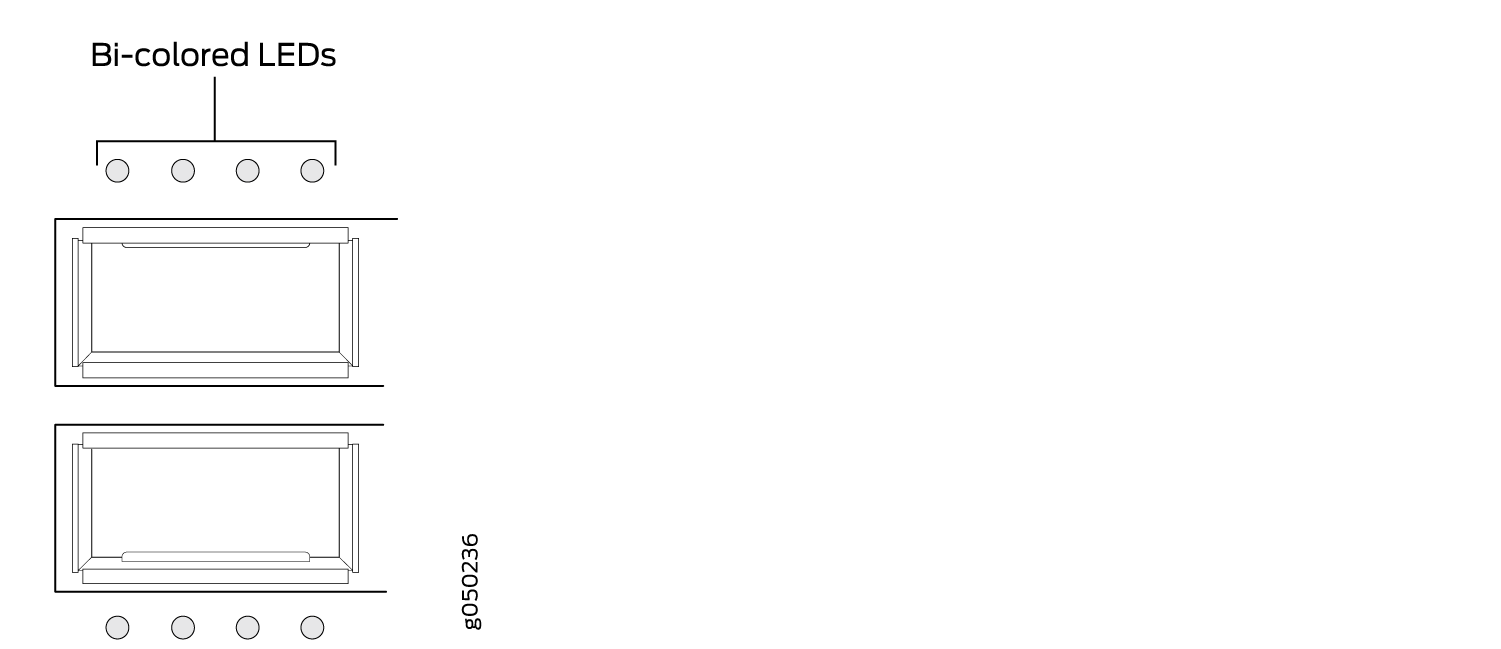QFX5110 Network Port LEDs
The Link/Activity LED configuration for QFX5110-48S uses bi-colored LEDs. The link LED indicates link activity or a fault. See Table 1.
As shown in Table 1 and Table 4 there are four bi-color LEDs for each QSFP+ access port. The first LED indicates link presence and activity, while the remaining LEDs indicate status. Table 2 describes how to interpret the Link/Activity QSFP28 port LEDs, counting from the left-most position.
|
Position |
Color |
State |
Description |
|---|---|---|---|
|
1–4 |
Unlit |
Off |
The port is administratively disabled, there is no power, the link is down, or there is a fault. |
|
1 |
Green |
On steadily |
A link is established (either 100-Gigabit or 40-Gigabit, non-channelized) but there is no link activity. When this LED is on, the LEDs in positions 2 to 4 are off. |
|
Blinking |
A link is established (either 100-Gigabit or 40-Gigabit, non-channelized) and there is link activity. |
||
|
2-4 |
Green |
On steadily |
A 40-Gigabit link is established in channelized mode, but there is no link activity. |
|
Blinking |
A 40-Gigabit link is established in channelized mode, and there is link activity. |
Table 3 describes how to interpret the Link/Activity LEDs on SFP+ ports.
|
LED |
Color |
State |
Description |
|---|---|---|---|
|
Link/Activity |
Unlit |
Off |
The port is administratively disabled, there is no power, the link is down, or there is a fault. |
|
Green |
On steadily |
A link is established, but there is no link activity. |
|
|
Blinking |
A link is established, and there is link activity. |
||
|
Status |
Unlit |
Off |
The link is down or there is a fault. |
|
Green |
On steadily |
A 10-Gigabit Ethernet transceiver is installed in the port and link is established. |
|
|
Green |
Blinking |
A 1-Gigabit Ethernet transceiver is installed in the port and the link is established. |
QFX5110-32Q |
QSFP28 and QSFP+ |
Link and ActivityStatus |
 |

